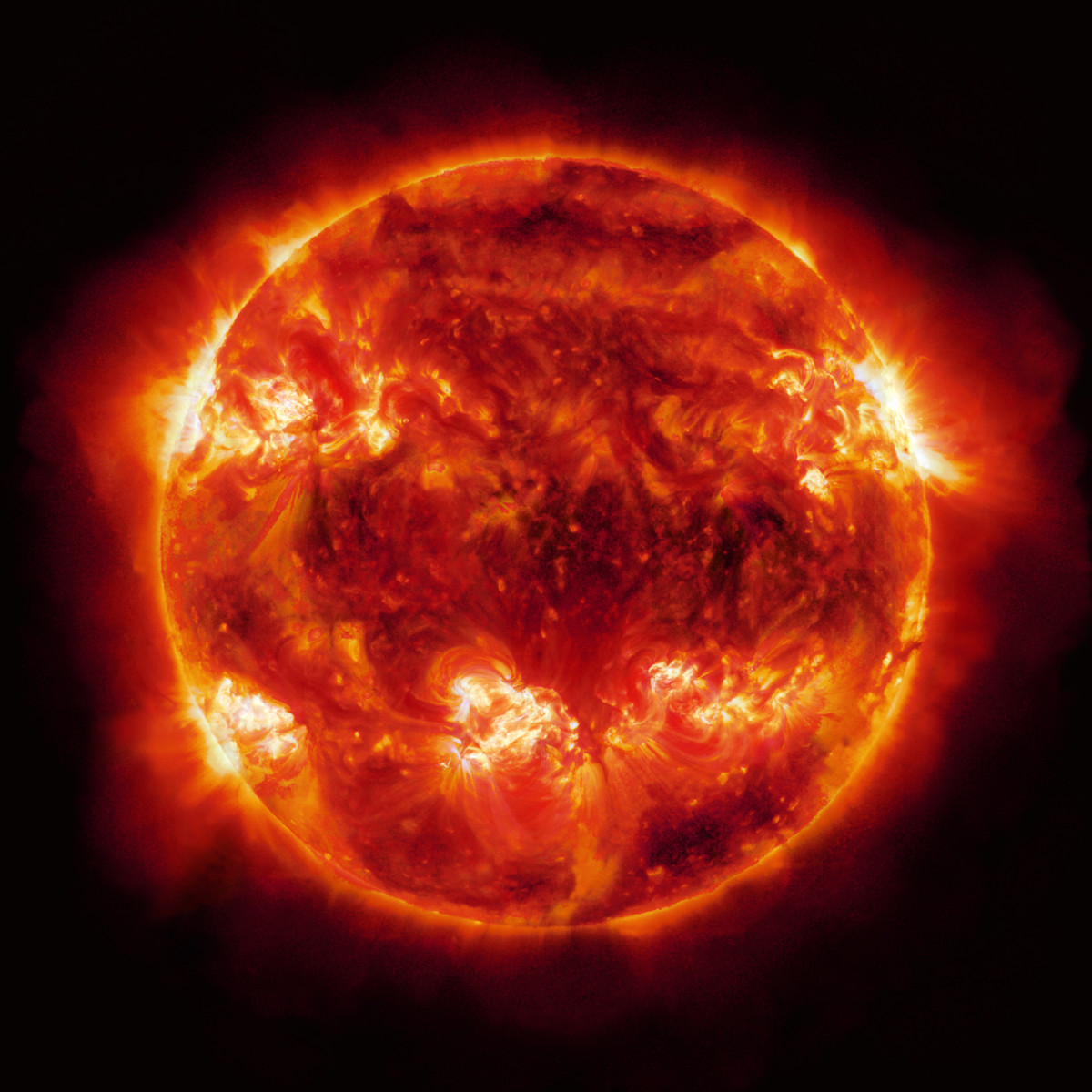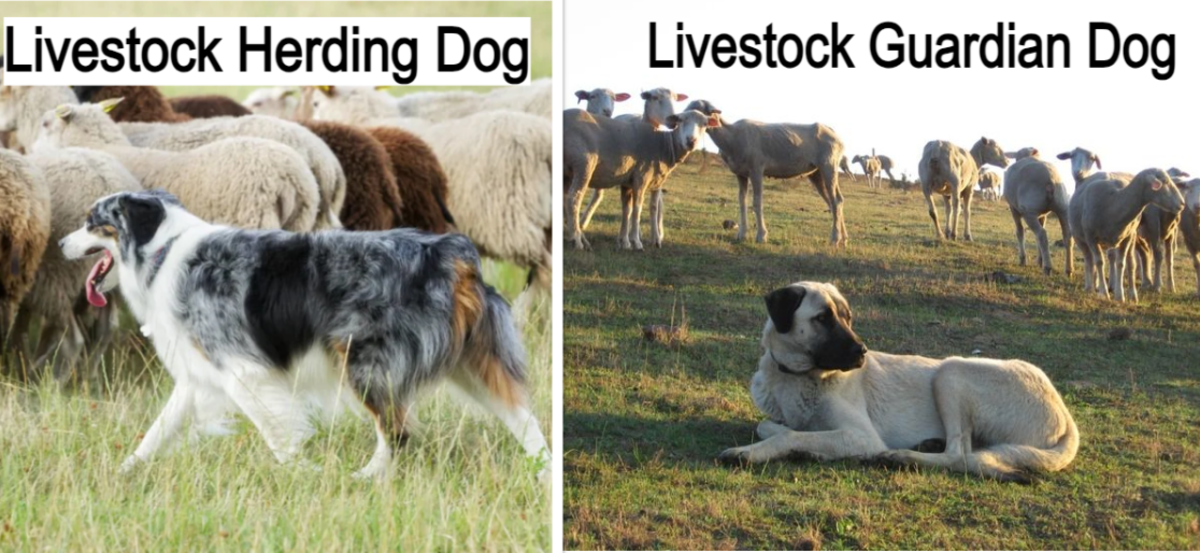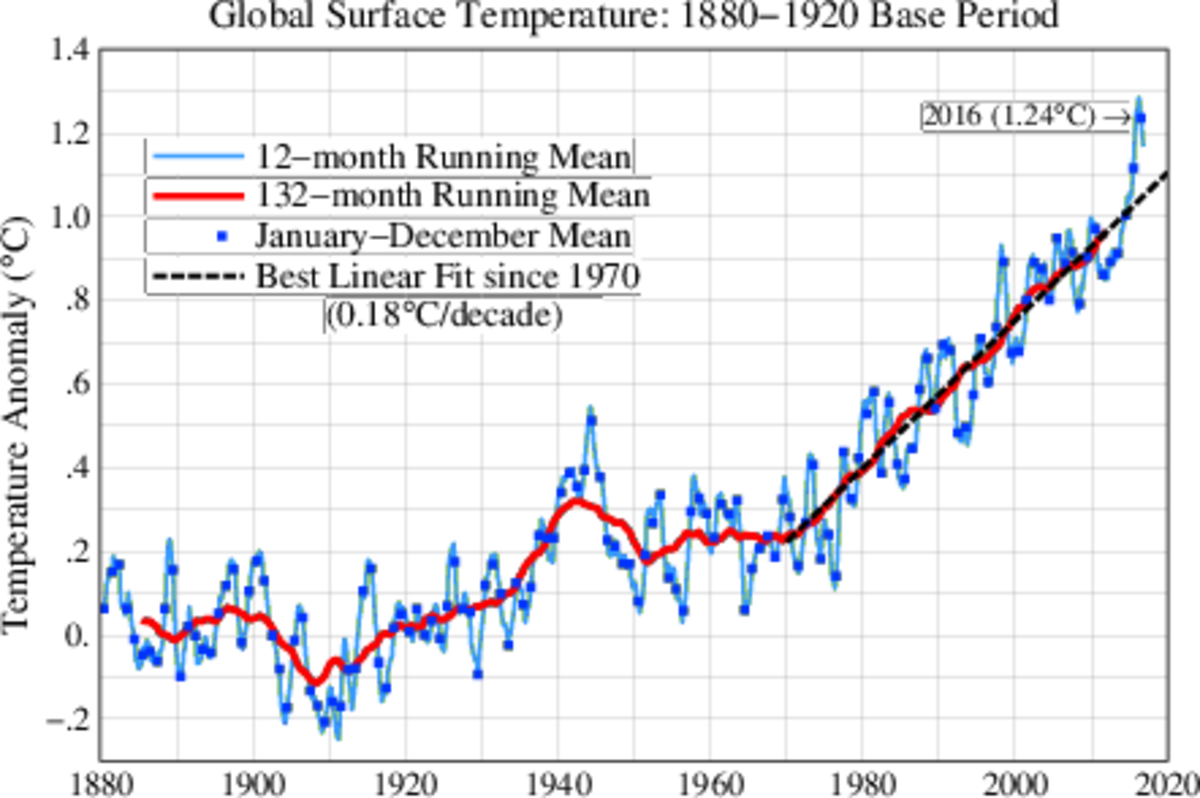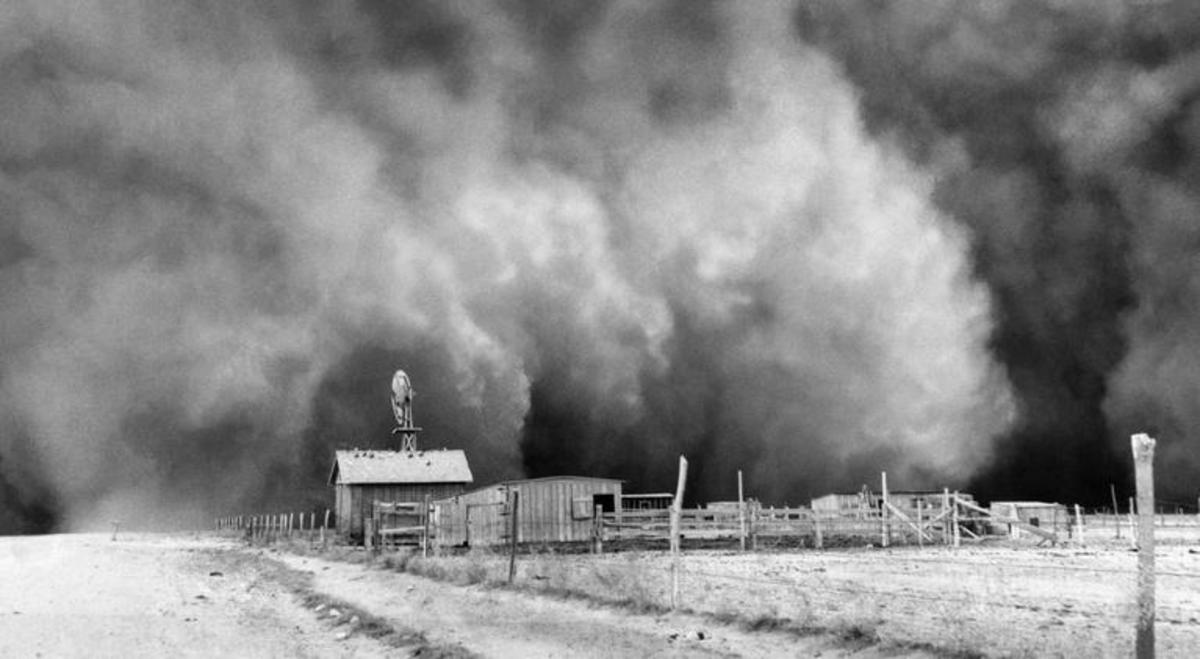Livestock Farming: Is Meat Ruining the Planet?
Is rearing livestock part of the climate change solution or part of the problem?
The production of livestock occupies approximately 20-30% land surface making it the most widespread land use of earth, and with the demand likely to double over the next couple of decades.
In particular, ruminant meat, that has a much higher greenhouse gas (GHG), land use, water, carbon and nitrogen footprint than other livestock products.
According to Grossi, et al 2018, the world population has increased by approximately 1 billion within the last 12 years, with the average increase at 83 million people annually. At this rate, by 2030 global population will reach 8.6 billion and then 9.8 billion by 2050...
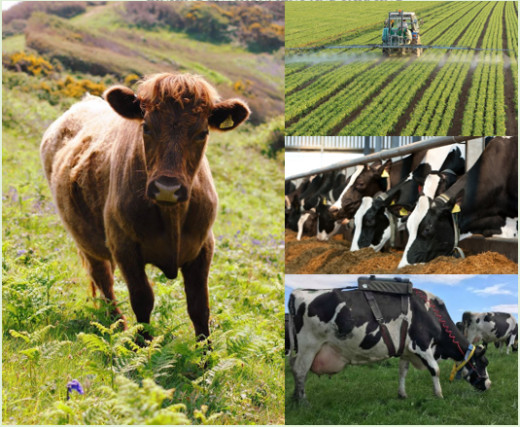
Agriculture and Greenhouse Gas Emissions
GHGs’ such as carbon dioxide (CO2) are emitted naturally into the atmosphere, although the sudden increase of GHG is mainly the result of human activities, mainly from activities such as burning fossil fuels, other GHGs’ are emitted through industrial processes, agriculture being one of them.
In 2012 agriculture in the EU generated over 400 million tonnes of Carbon Dioxide equivalent (CO2e) , this making up 10.35% (Figure 1) of the total GHG emissions for the EU.
Emission given off by agriculture, methane (CH4), nitrous oxide (N2O) and carbon dioxide (CO2).
Methane – This primarily comes from enteric fermentation (flatulence) by ruminant animals and is a powerful GHG, this gas can be up to 60 times more damaging than CO2.
Nitrous Oxide – This GHG forms during soil nitrification and denitrification, this is the aerobic microbial oxidation of ammonia (NH4) to nitrates (NO3) and denitrification is the reduction of NO3 to Nitrogen gas (N2). Reducing the emissions of N2O is particularly important as this can be over 300 times more damaging than CO2.
Carbon Dioxide – The most common GHG globally and provides the benchmark for measuring other GHGs’ (CO2e = Carbon Dioxide equivalent). This gas remains in the atmosphere much longer than N2O and CH4 and is less damaging.
Figure 1: The total GHG emissions for the EU in 2012.
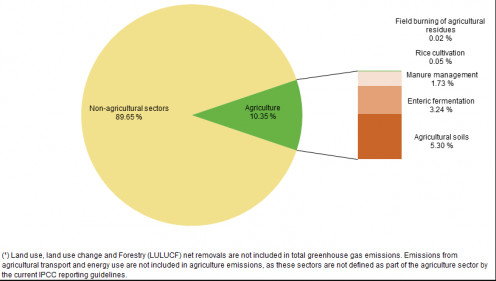
Mitigation Practices
Enteric CH4 mitigation practices
GHG emissions from rumen fermentation can be decreased by increasing forage digestibility and digestible forage intake. For example, replacing grass silage with corn silage can reduce enteric CH4 emissions, also legume silages will be a better replacement for grass silage due to its lower fibre content. By replacing silage with more effective silage's will improve forage quality and reduce GHG emissions.
Harnessing the power of Methane to Power the Future.
Methane is a powerful GHG and is much more efficient than CO2 at trapping heat and holding on to that heat for much longer in the atmosphere, and because of this, it does the most damage.
Organic materials are broken down in an oxygen free environment by bacteria, this process is called anaerobic digestion (Figure 2). Once the organic waste is broken down by the use of anaerobic digestion and turns it into biogas, which contains energy (gas and electricity), and valuable soil products.
Figure 2 - Anaerobic Digestion Process
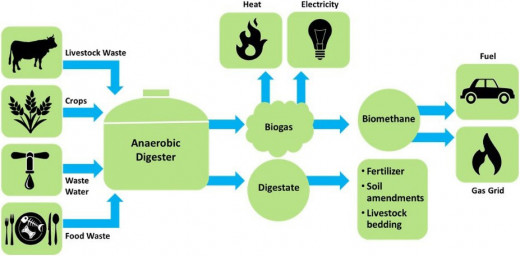
Rotational Grazing
Grasslands store more than double the amount of carbon in all other agricultural areas. The practice of moving livestock between pastures is known as rotational grazing. This can increase the quality of forage production by 30-70% each year, the increase in forage is accomplished by minimising the over grazing of the grazing land.
Avoiding desertification | Allan Savory
Allan Savory - How to green the world's deserts and reverse climate change (full talk)
Soil as Carbon Storehouse
Soil management practices influences many physical and biochemical mechanisms that can bring carbon gain or losses these include soil restoration and woodland regeneration, no-till farming, cover crops, nutrient management, manuring and sludge application, improved grazing, water conservation and harvesting, efficient irrigation, agro-forestry practices, and growing energy crops on spare lands.
Environmental Impacts of Rearing Cattle: Which is more environmentally friendly, Pasture-fed or Grain-fed Cattle?
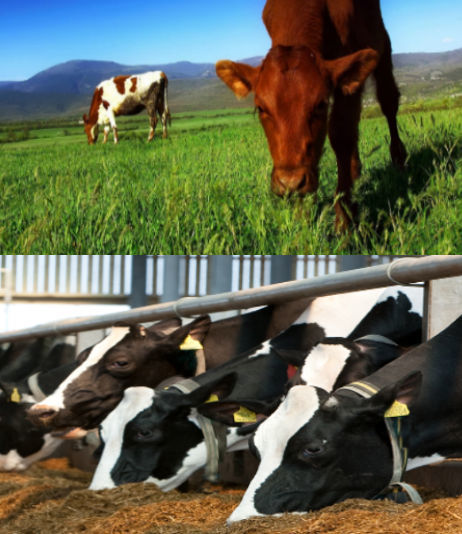
Pasture-fed Cattle
It takes on average 7kg of grain to produce about 1kg of beef, making this an inefficient use of resources.
Compared to grain-fed cattle kept in feeding-lots, cattle that are 100% grassland or pasture-fed will need very little use of additional inputs (transportation of their food etc.) as they rely on existing grasslands, making pasture fed cattle the more environmentally friendly choice.
The productivity and fertility of soils can be improved by rearing cattle on pastureland through grazing management and the returning of the cattle’s manure back to the soil.
Rearing cattle on land that would normally be abandoned, such as moorland and highland, is very practical as cattle can convert grass and other plants into meat and milk. This is not only providing grazing for these cattle but is also providing a service in maintaining the landscape and new habitats for a variety of plants and animals, if properly managed.
Pastures and Biodiversity – For the more organic farm that rear only grassland/pasture-fed cattle, inevitably introduce a wide range of wildlife into their fields.
Pastures are left to grow tall with a mixture of grasses and herbs, hedgerows with trees and other plant life surround the perimeter of the fields, not only having a deep and complex root system but providing a variety of habitats for wildlife.
Grazed and Confused
Grass is high in fibre and so is much harder to digest than grain, and because pasture-fed cattle are kept around much longer, they produce 40 to 60% more methane emission than grain-fed cattle and require more land and water. Pasture-fed cattle, when managed well, is beneficial to the environment.
Waste Management for pastureland is a lot less labour intensive. Although manure is sometimes harvest from farms and milking parlours, the manure is generally spread naturally by the cattle out in the pastureland, and providing the right grazing practices are carried out, this will benefit the pastureland itself.
Grain-fed Cattle
Cattle that are fed on a high-grain diet are generating less methane, this is because of the production of propionate instead of acetate, which would be promoted under high-forage diets.
More cattle can be reared at feedlots and kept for less cost than pasture reared cattle, so by intensifying the production and growth rates through increasing the amount of grain and possibly growth hormones, the increase in meat demand could be met. Raising the cattle with grains is more cost effective than pasture-fed cattle, grain-fed cattle also will have higher amounts of Omega-6, much more tender than pasture-fed cattle and higher in fats making the beef tastier.
Waste Management – in a feedlot environment cattle can produce up 1 tone to 2 tone of manure per head per year. A pasture-fed dairy cow reaches their slaughter weight a lot slower than the grain-fed cattle and will produce a considerably more than the grain-fed cattle kept at the feedlot.
Waste management on a feedlot environment is more labour intensive, costing more in money and CO2 emissions (farm machines/vehicle’s etc.). The risk of runoff from overflowing waste lagoons as seen in Figure 3 is high unless well manged and constructed well, the initial construction of the lagoons and the maintenance will also contribute to the CO2 emission, the lagoons them self will also emit GHGs’.
All year-round Production – Cattle are fed grain and corn because not only they are nutritious, but they are available all year round, unlike grass that the doesn’t grow all year in most means they can raise a consistent, supply of beef.
References available on request
© 2020 Dean Murray



